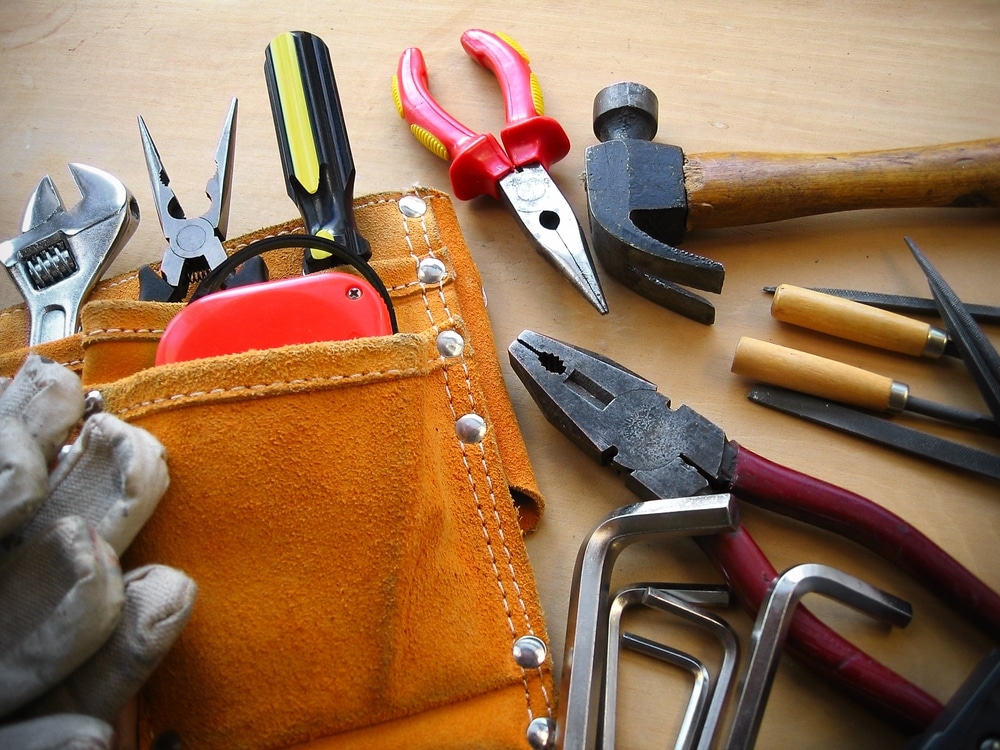
160+ Advanced Spanish Vocabulary Words to Propel You to Super Fluency
Advanced Spanish vocabulary is composed of words you don’t use every day. But they’re highly specific words that make you sound super fluent.
They’re often obscure or technical, but necessary to be exact. You have to put forth a bit more effort to learn them.
But it’s worth it, because after learning these words, you’ll grow your vocabulary enormously and expand the scope of your Spanish knowledge.
You’ll improve your comprehension and be able to describe things in greater detail.
Now, onto the vocabulary!
Contents
- Herramientas — Tools
- Animales — Animals
- Partes del Cuerpo — Body Parts
- Al Aire Libre — Outdoors
- Oficina — Office
- Jardín — Garden
- Verbos — Verbs
- Emociones — Emotions
- Adjectivos — Adjectives
- Política — Politics
- Otras Palabras — Other Words
- And One More Thing…
Download: This blog post is available as a convenient and portable PDF that you can take anywhere. Click here to get a copy. (Download)
Herramientas — Tools
Now, I like to think that I know my way around a toolbox, but when my husband told me I had to assemble the cute, new coffee table…well, all of a sudden a drill was a complicated device. I couldn’t even imagine going into a hardware store and navigating all those options in Spanish!
Here are some tools that’ll help you next time you want to start a home improvement project.
- Bricolaje — Do it yourself, DIY
- Mazo — Mallet
- Martillo — Hammer
- Destornillador — Screwdriver
- Palanca — Lever
- Clavo — Nail
- Alicates — Pliers
- Llave inglesa — Wrench
- Papel de lija — Sandpaper
- Taladro — Drill
- Formón — Chisel
- Ferretería — Hardware Store
- Abrazadera — Clamp
- Regla — Ruler
- Alambre — Wire
Animales — Animals

My daughter and I go to the zoo every now and then and I have to do something to entertain myself as she runs around. I started looking at the animals differently thinking of how I would describe them.
I knew the words for “pig” and “tiger,” but did I know the words for snout and paw? Now I do!
- Colmillos — Fangs
- Hocico — Snout
- Pata — Paw
- Rugido — Roar
- Garra — Claw
- Bigotes — Whiskers
- Piel — Fur
- Plumas — Feathers
- Pezuñas — Hooves
- Branquias — Gills
- Nutria — Otter
- Pico — Beak
- Alas — Wings
- Escamas — Scales
- Cuernos — Horns
To learn over 100 more animals in Spanish, read this:
130+ Common Animals in Spanish (With a Downloadable PDF!) | FluentU Spanish Blog
Learn about animals in Spanish with this thorough guide, which features Spanish vocabulary for over 130 animals—from common pets to animals in rainforests and sea…
Partes del Cuerpo — Body Parts

Some of the first things you learn to name in Spanish are the basic body parts: eyes, ears, mouth, nose, etc. But can you really describe all of your body as easily in Spanish as you can in English?
- Pestañas — Eyelashes
- Cejas — Eyebrows
- Fosas Nasales — Nostrils
- Entrañas — Guts
- Vena — Vein
- Uña — Fingernail
- Cutícula — Cuticle
- Poros — Pores
- Pantorrilla — Calf
- Muslo — Thigh
- Hueso — Bone
- Pulgar — Thumb
- Mejilla — Cheek
- Rótula — Kneecap
- Talón — Heel
To learn even more body parts in Spanish, check out this post:
Body Parts in Spanish: 74 Essential Words (Plus Must-know Idioms and Expressions) | FluentU Spanish Blog
Knowing how to talk about body parts in Spanish is important. You’ll use these terms at the doctor’s office, in the gym, when describing pain and even in daily life. Click…
Al Aire Libre — Outdoors

I really love spending time outdoors. Camping and boating are a lot of fun—well, anything outside is a lot of fun. But when I go camping I’m usually with my English-speaking family and don’t have to speak Spanish, so I found that this was an area in which my vocabulary was seriously suffering. Let’s look beyond “tree” and “flower” and really dig into some words that’ll help you on your next camp out.
- Fogata — Campfire
- Charca — Puddle
- Brújula — Compass
- Leño — Log
- Remo — Oar
- Soga — Rope
- Cantimplora — Water bottle
- Tienda de Campaña — Tent
- Carnada — Bait
- Botiquín — First-aid Kit
- Caminata — Hiking
- Caza — Hunting
- Acampar — Camping
- Asar — To grill
- Gafas de sol — Sunglasses
Now you’re all set for fun in the sun! Don’t forget to pack the sunblock and the mosquito repellent.
Oficina — Office

Oh, the office. There are so many different objects that are in the common office. Surprisingly, you may not have already covered these in your Spanish practice. These little odds and ends just always seem to slip through the cracks. Let’s learn the words for some of these objects.
- Tarjeta de negocios — Business card
- Teclado — Keyboard
- Carpetas — Folders
- Archivador — Filing cabinet
- Sobre — Envelope
- Pegamento — Glue
- Estuche — Pencil case
- Grapadora — Stapler
- Estantería — Bookshelf
- Bandita Elástica — Rubberband
- Pila — Battery
- Sujetapapeles — Paperclip
- Carta — Letter
- Cinta Adhesiva — Tape
- Resaltador — Highlighter
Next time you need a break from answering phones or filing papers, take some time to learn the words of other office supplies.
Jardín — Garden

Gardens are always fun and relaxing. It’s amazing to see something grow from a little seed into an amazingly delicious tomato or watermelon. A little bit of dirt under your fingernails and a little bit of sunshine on your face is good for the soul. Here are some words that’ll help you connect with nature out in the garden.
- Canasta — Basket
- Tijeras de podar — Clippers
- Manguera — Hose
- Maceta — Pot
- Pala — Shovel
- Pala de punta — Spade
- Aspersor — Sprinklers
- Regadera — Watering can
- Cosechar — Harvest
- Abono — Mulch
- Huerta — Orchard
- Espantapájaros — Scarecrow
- Semilla — Seed
- Malezas — Weeds
- Marchitado — Wilted
Next time you are at the nursery looking for gardening tools, this list will help you. Something I didn’t include, but that you should check out, are words of plants and flowers. Plus now you have new words to add to your ever expanding Spanish vocabulary!
Verbos — Verbs

Verbs are my favorite words because they describe movement. Here’s a cool selection of advanced Spanish verbs I’ve picked up lately.
- Puntear — to pluck
- Revelar (contar) — to reveal something
- Imitar — to mimic someone
- Aplazar — postpone
- Evadirse — to disconnect
- Desmayarse — to faint
- Hallar — to discover/uncover
- Estrenar — to premiere (movies/sitcoms)
- Repeler — to repel
- Asfixiar — to choke
- Sisear — To hiss
- Silbar — To whistle
- Fanfarronear — To brag
For a lot more advanced Spanish verbs, check out this post:
10 Advanced Spanish Verbs | FluentU Spanish Blog
Using advanced Spanish verbs can make you sound much more fluent. To help you on your way to fluency, we’ve compiled this handy list of advanced Spanish verbs to add to…
Emociones — Emotions

From feeling ecstatic to feeling down in the dumps, there’s a Spanish word for every emotion it seems.
- Melancolía — Melancholy
- Euforia — Euphoria
- Resignación — Resignation
- Perplejidad — Perplexity
- Arrobo — Rapture
- Júbilo — Jubilation
- Conmoción — Commotion
- Zozobra — Unease
- Ímpetu — Impulsive
- Desasosiego — Restlessness
- Nervioso / Nerviosa — Nervous
- Orgulloso / Orgulloasa — Proud
- Avergonzado / Avergonzada — Embarrassed
To learn more Spanish feelings and emotions, check out this post:
Feelings in Spanish: 50 Useful Ways to Describe Your Emotions | FluentU Spanish Blog
Expressing ourselves can be tough at the best of times, but with this vocabulary you’ll have no problem expressing your feelings in Spanish! Click here to learn 50 useful…
Adjectivos — Adjectives

After verbs, adjectives are my favorite class of words because they’re just so specific. Here are some of my favorite advanced Spanish adjectives.
- Inefable — Ineffable
- Efímero /Efímera — Ephemeral
- Irreverente — Irreverent
- Procrastinador /Procrastinadora — Procrastinator
- Efervescente — Effervescent
- Ubérrimo / Ubérrima — Luxuriant/Abundant
- Acróbata — Acrobat
- Oblicuo / Oblicua — Oblique
- Voraz — Voracious
- Ambivalente — Ambivalent
To learn more advanced Spanish adjectives, click over to this post:
32 Advanced Spanish Adjectives for Better Self-expression | FluentU Spanish Blog
In need of some advanced Spanish adjectives? Check out this list of 32 Spanish adjectives that are guaranteed to add some lovely color to your spoken language. Each word…
Política — Politics

If you follow politics, you know that they use some pretty advanced vocabulary. Here are some good ones.
- Demagogia — Demagogy
- Oligarquía — Oligarchy
- Autocracia — Autocracy
- Totalitarismo — Totalitarianism
- Plutocracia — Plutocracy
- Teocracia — Theocracy
- Anarquía — Anarchy
- Federalismo — Federalism
- Nacionalismo — Nationalism
Otras Palabras — Other Words

As I was putting together this post, I came across a few other words that don’t really fit well into a single category. Here are a few other words that could be handy to have lying around in your brain. Several of these are verbs, which is nothing but good.
- Semejante — Similar
- Dispuesto / Dispuesta — Willing
- Huelga — Strike
- Tasa — Rate
- Personaje — Character
- Elenco — Cast (of a play, movie, etc.)
- Fondo — Background
- Apenas — Barely
- Ojalá — Hopefully
- Propósito — Purpose
- Bulto — Bulge
- Filosa — Sharp
- De puntillas — On tippy toes
- Reojo — Peripheral vision
- Mechón de cabello — Lock of hair
- Pendiente — Slope/incline
- Otrora — In olden days
- En aras de — For the sake of
- Alcurnia — Lineage
- Escarnio — Mocking
- Farsa — Farce
- Vestuario — Costume
See, isn’t vocabulary so much fun?
Before you know it, all of your existing Spanish boxes will be totally full and spilling over—but never stop looking for new words to learn. There’s always more vocabulary to add to your already expanding Spanish knowledge. Don’t get discouraged or overwhelmed, just take it one word at a time.
Now that you’ve seen the advanced Spanish vocabulary that I’ve found most useful, go out and create your own lists!
Go to a store and walk around. I recommend somewhere huge like Wal-Mart. As you walk up and down the aisles, try to name absolutely everything you see in Spanish. If you don’t know the word, write it down on a pad.
When you get home, look it up and write it down next to the English word, or plug it into your vocabulary lists on the FluentU language learning program.
FluentU takes authentic videos—like music videos, movie trailers, news and inspiring talks—and turns them into personalized language learning lessons.
You can try FluentU for free for 2 weeks. Check out the website or download the iOS app or Android app.
P.S. Click here to take advantage of our current sale! (Expires at the end of this month)

Your vocabulary skills will start to explode!
Download: This blog post is available as a convenient and portable PDF that you can take anywhere. Click here to get a copy. (Download)
And One More Thing…
If you've made it this far that means you probably enjoy learning Spanish with engaging material and will then love FluentU.
Other sites use scripted content. FluentU uses a natural approach that helps you ease into the Spanish language and culture over time. You’ll learn Spanish as it’s actually spoken by real people.
FluentU has a wide variety of videos, as you can see here:

FluentU brings native videos within reach with interactive transcripts. You can tap on any word to look it up instantly. Every definition has examples that have been written to help you understand how the word is used. If you see an interesting word you don’t know, you can add it to a vocab list.

Review a complete interactive transcript under the Dialogue tab, and find words and phrases listed under Vocab.

Learn all the vocabulary in any video with FluentU’s robust learning engine. Swipe left or right to see more examples of the word you’re on.

The best part is that FluentU keeps track of the vocabulary that you’re learning, and gives you extra practice with difficult words. It'll even remind you when it’s time to review what you’ve learned. Every learner has a truly personalized experience, even if they’re learning with the same video.
Start using the FluentU website on your computer or tablet or, better yet, download the FluentU app from the iTunes or Google Play store. Click here to take advantage of our current sale! (Expires at the end of this month.)



